Do you have a question about the Orion SPACEPROBE 130ST EQ and is the answer not in the manual?
Ensuring smooth telescope movement on both axes of the equatorial mount by proper balancing.
How to adjust the focuser for a sharp image of distant objects.
Guidance on observing with eyeglasses, checking eye relief.
Procedure to align the finder scope with the main telescope for accurate aiming.
Steps to align the equatorial mount's R.A. axis with Earth's rotational axis.
How to use slow-motion cables for fine adjustment and tracking.
Using the R.A. slow-motion cable to track objects as Earth rotates.
Information on optional motor drives for hands-free tracking.
Explanation of setting circles for locating celestial objects by coordinates.
Procedure to calibrate the R.A. setting circle for accurate object location.
Using calibrated setting circles to locate celestial objects.
Guidance on aiming the telescope in different directions using R.A. and Dec. axes.
Using the collimation cap and center mark for precise mirror alignment.
Step-by-step guide to aligning the secondary mirror for optimal view.
Final adjustment procedure for the primary mirror's tilt.
Using a star test to verify and confirm optical collimation.
Tips for selecting the best location for astronomical observation.
Understanding atmospheric conditions affecting image quality.
Importance of allowing the telescope to reach ambient temperature.
Guidance on how to achieve optimal night vision for observing.
How to choose eyepieces for different magnifications and viewing.
Observing the Moon, its phases, and features.
Observing the Sun safely with a solar filter.
Viewing planets like Jupiter, Saturn, and Venus.
Observing stars, their colors, and double star systems.
Observing faint objects like nebulas, clusters, and galaxies.
Technique for locating deep-sky objects using star charts and guide stars.
Proper procedures for cleaning telescope lenses and eyepieces.
Detailed steps for cleaning primary and secondary mirrors.
Ensuring smooth telescope movement on both axes of the equatorial mount by proper balancing.
How to adjust the focuser for a sharp image of distant objects.
Guidance on observing with eyeglasses, checking eye relief.
Procedure to align the finder scope with the main telescope for accurate aiming.
Steps to align the equatorial mount's R.A. axis with Earth's rotational axis.
How to use slow-motion cables for fine adjustment and tracking.
Using the R.A. slow-motion cable to track objects as Earth rotates.
Information on optional motor drives for hands-free tracking.
Explanation of setting circles for locating celestial objects by coordinates.
Procedure to calibrate the R.A. setting circle for accurate object location.
Using calibrated setting circles to locate celestial objects.
Guidance on aiming the telescope in different directions using R.A. and Dec. axes.
Using the collimation cap and center mark for precise mirror alignment.
Step-by-step guide to aligning the secondary mirror for optimal view.
Final adjustment procedure for the primary mirror's tilt.
Using a star test to verify and confirm optical collimation.
Tips for selecting the best location for astronomical observation.
Understanding atmospheric conditions affecting image quality.
Importance of allowing the telescope to reach ambient temperature.
Guidance on how to achieve optimal night vision for observing.
How to choose eyepieces for different magnifications and viewing.
Observing the Moon, its phases, and features.
Observing the Sun safely with a solar filter.
Viewing planets like Jupiter, Saturn, and Venus.
Observing stars, their colors, and double star systems.
Observing faint objects like nebulas, clusters, and galaxies.
Technique for locating deep-sky objects using star charts and guide stars.
Proper procedures for cleaning telescope lenses and eyepieces.
Detailed steps for cleaning primary and secondary mirrors.
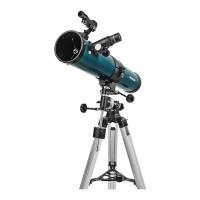


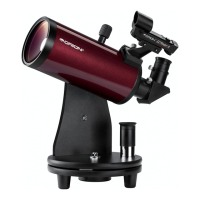
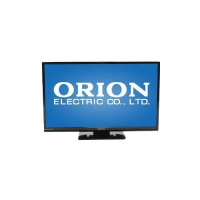
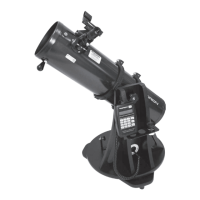
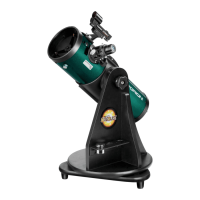
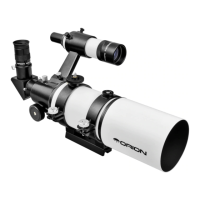
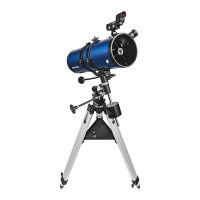
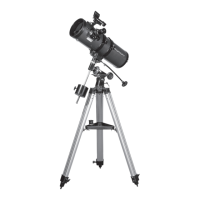
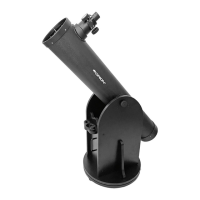
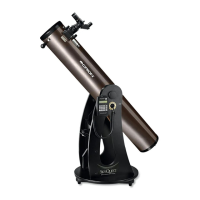
